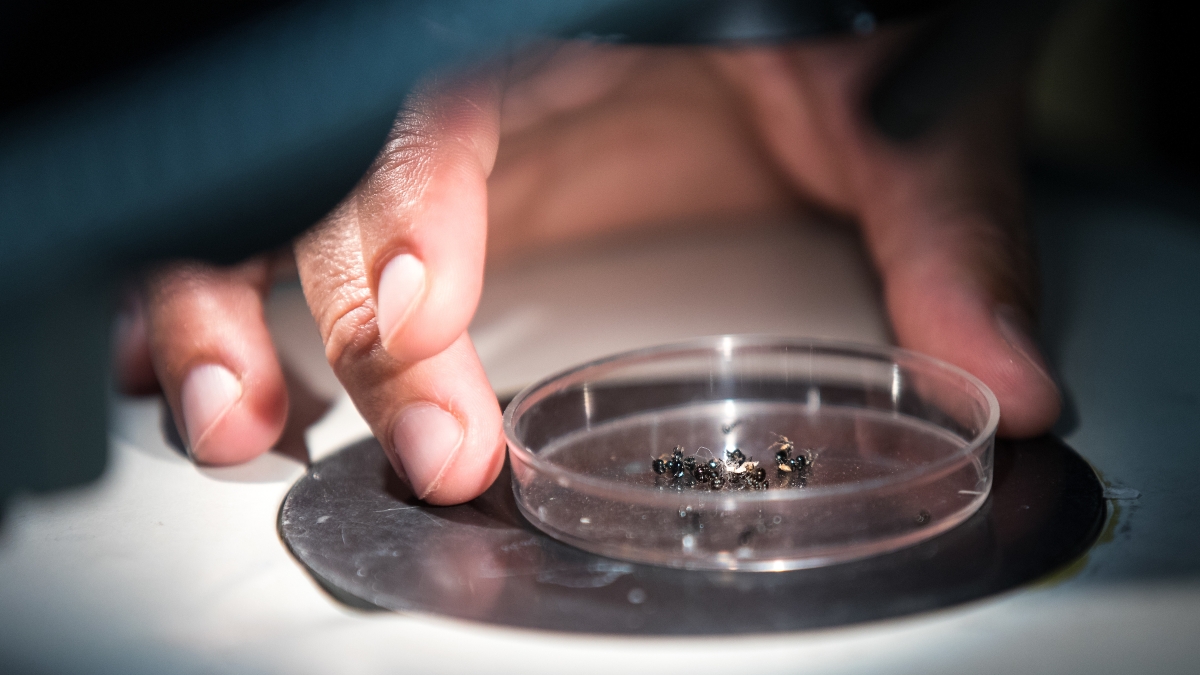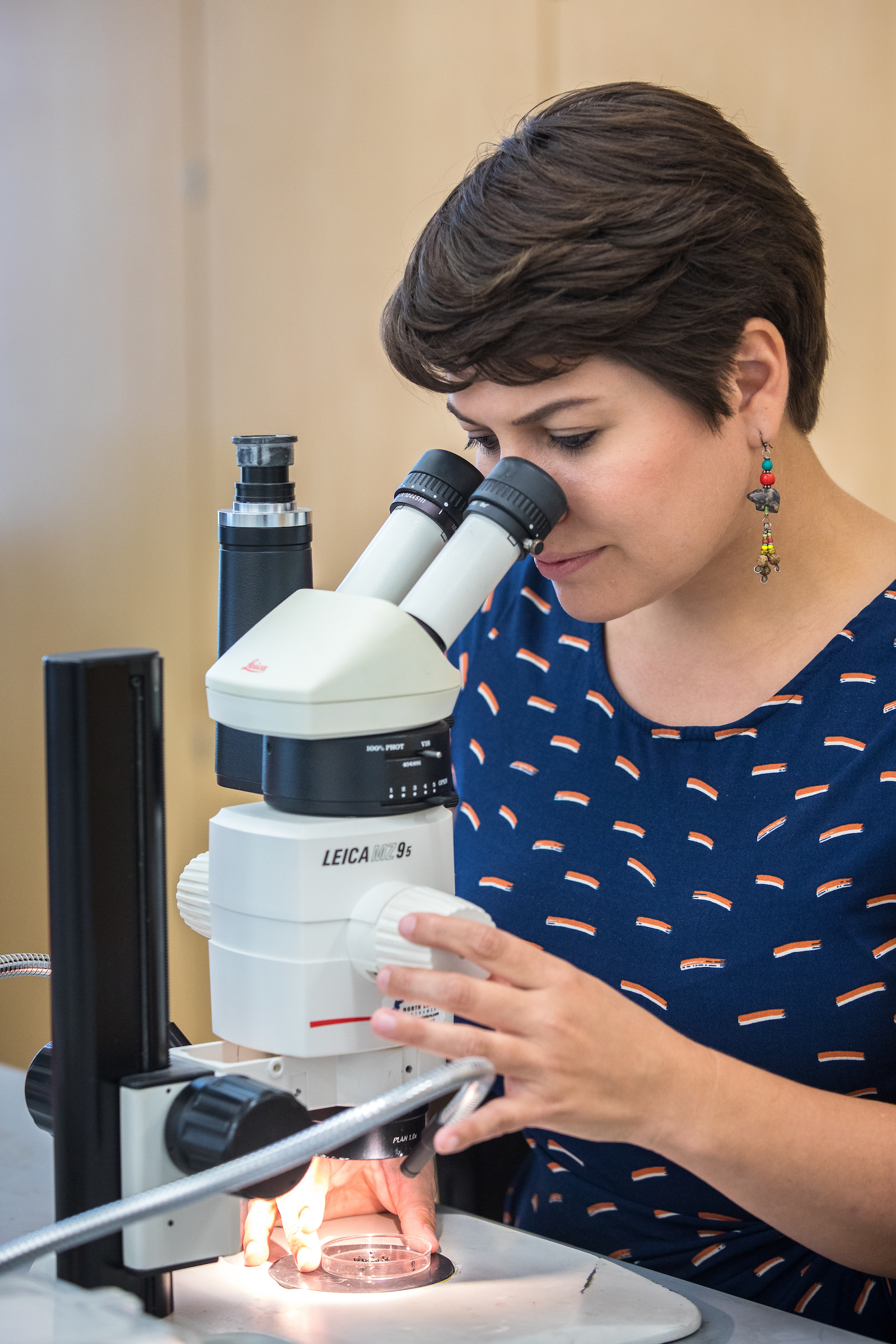We all know the type. The project co-worker who doesn’t really work on the project, but shows up for the group photo. The dinner companion who develops alligator arms when the check appears. Shirkers. Goldbrickers. Idlers. Malingerers.
Imagine outing them, then ripping off their ears, arms and legs.
This is the dangerous game played by the nitidulid beetle. It disguises itself as an ant, lurks along their foraging trails and tricks them into giving it food. The beetle is so good at deception that it gets more food from ants than ants get from their fellows.
But if the ants find out, reprisal can be brutal.
A paper published by a pair of Arizona State University scientists this month detailed this practice. It’s a glimpse into a world inside ant colonies resembling a cross between a World War II spy thriller and “Invasion of the Body Snatchers.” In that world there is deception, drama, subterfuge and ruse de guerre. Insects disguise themselves as ants or mimic ant behavior to successfully live hidden in plain sight amongst ants.
“The insect superorganism is ... full of such commensals (parasitic organisms that don’t harm their hosts),” said co-author Bert Holldobler, a sociobiologist and an evolutionary biologist in the School of Life Sciences at ASU who studies the evolution of social organization in insects. “Many of them have evolved different degrees of adaptations to the social habits of their ant hosts.”
Ants feeding nitidulid beetles. Video courtesy of Bert Holldobler
Creatures that live with ants are called myrmecophiles. Christina Kwapich, a postdoctoral researcher who co-authored the paper with Holldobler, studies them. She explained how nitidulid beetles buffalo the ants.
“We refer to them as highwaymen beetles, because they’re robbing the traffic lines of the ants,” Kwapich said.
Ants go out on massive foraging trails to collect honeydew from little insects like aphids. They fill a social stomach, which is an enlargement of their esophagus, with their crop. In that crop they have this sugary liquid that they can share with their own nestmates through mouth-to-mouth regurgitation (a process called trophallaxis).
“It’s that behavior that this parasitic beetle has sort of capitalized on,” Kwapich said. “It’s broken the code of communication between the ants in order to steal that sugary liquid that’s meant for other nestmates. What the beetle does, what Bert discovered, is it sits along the sides of these foraging trails and populates the nest entrance area and waits for returning foragers with their crops laden with sugary liquid.”
The beetle is able to steal quite a bit of liquid. They actually get more of the food than the other ants do: 1.8 times as much food. They’re true parasites.
“We like to think of what the sensory world of the ant is, and it’s mostly tactile and chemical,” Kwapich said. “It’s those features that the beetle has used to break the code of feeding.”
The food transfer is a one-way street. The ants are feeding the beetles, but the beetles are not giving it back.
Christina Kwapich
“Also, the beetles aren’t giving it to each other,” she added.
All the beetle had to do to evolve is to break a simple communication code the ants use to solicit food from nestmates, Holldobler said.
“Employing radioactively labeled honey water, we were able to measure how successful the beetle is soliciting food from the ants,” he said. “It turned out that his food-begging behavior is good enough to receive food from workers that carry honeydew in a full ‘social crop,’ but not good enough to receive food from workers inside the nest.”
The beetles also have a kind of Mata Hari seduction trick scientists have observed but not yet cracked. They have glands in their head and around their mouths which secrete some sort of appeasement compound.
“At the beginning of the interaction, where the food stealing is happening, the ant is transfixed by the secretion the beetle makes,” Kwapich said. “We don’t know what that substance is.”
The beetles aren’t always successful, but, if discovered, they have some adaptations they can deploy to save themselves. The ants will try to flip the beetle over. If they can accomplish this, they will tear off the beetle’s antennae and legs.
“They don’t always work, but what they do have is legs covered in brushy hairs that allow them to grip the ground,” Kwapich said. “They have a shell with these little wings on it that flatten. When an ant perhaps notices the beetle isn’t an ant, the beetle can really suction itself to the ground. It makes a perfect little cup on the ground that’s difficult to pry up. Occasionally the ants can pry the beetle up and kill it. It is a dangerous game for the beetles to be playing, but they’re pretty good at it.”
Holldobler considers highly evolved social insect colonies, such as most ant societies, as superorganisms.
“All organisms, including our own, provide ecological niches for all sorts of other organisms,” he said. “Some are beneficial symbionts, others make their living as benign parasites, and again others are deadly pests. This is also the case with superorganisms of social insect societies.”
In the 16th and 17th centuries, Navajo raiders struck Spanish settlements along the Rio Grande every year, but they always left enough turkeys and sheep so that there would be more next year. They stole a little, not a lot. The beetles do the same thing. (Some ants do it as well when raiding rival colonies, according to Kwapich.)
“It’s not occurring at high enough numbers to affect the success of the colony,” she said. “The colony still survived for many years and they were still able to reproduce. The beetles are occurring at a low enough abundance that the colony still survives to be parasitized.”
The ant cricket — Myrmecophilus manni — steals food from ants by rubbing against the ants to acquire their odor, allowing it to blend in with the tiny insects. Some are pictured here in the Insect Rearing and Behavior Lab on ASU's Tempe campus on Aug. 16. Photo by Charlie Leight/ASU Now
Most myrmecophiles mimic the smell of the nest they live in. Ants are covered in a waxy hydrocarbon substance, which is how they identify each other and their nest. Crickets and other myrmecophiles don’t have this substance. They will comb ants with special tools like brushy mouth parts or leg bristles and anoint themselves with it. Crickets will walk under ants, rise up and rub themselves against the ants.
“This is all to maintain the chemical mimicry that’s allowing the ants to be blind to them in the nest,” Kwapich said.
Myrmecophile spiders can live undetected amongst the ants they prey on.
“If you switch them to another nest they will actually molt their cuticle,” she said. “They’ll get rid of that old smell as rapidly as possible.”
Other beetles live inside ant nests. They have adoption glands that encourage ants to pick them up and bring them inside.
“Again, they’re using the chemical communication signals of the ants and they’re using a glandular secretion to inspire the ants to bring them in,” Kwapich said. “They also have appeasement glands which secrete a substance the ants find attractive, and they have defensive glands for when things get ugly. They have cracked the chemical code of the ant language.”
Even some vertebrates are myrmecophiles, like snakes, lizards, frogs and birds.
“Most of what we work on in this lab are other invertebrates,” she said. “Here in the lab we have one of my favorite myrmecophiles, Myrmecophilus manni. It is one of the tiniest crickets in the world. ...
“The interesting them about them is they are generalists; they don’t live with one specific kind of ant host. They live with many different ants. Depending on the ant they live with, they reach a different body size. You can get really big ant crickets if they live with a big ant host. That’s one of the mysteries we’re trying to solve in our lab right now.”
Top photo: ASU postdoctoral researcher Christina Kwapich looks at a sample collection of ants with an ant cricket in the Insect Rearing and Behavior Lab in Tempe. Photo by Charlie Leight/ASU Now
More Science and technology
Extreme HGTV: Students to learn how to design habitats for living, working in space
Architecture students at Arizona State University already learn how to design spaces for many kinds of environments, and now they can tackle one of the biggest habitat challenges — space architecture…

Human brains teach AI new skills
Artificial intelligence, or AI, is rapidly advancing, but it hasn’t yet outpaced human intelligence. Our brains’ capacity for adaptability and imagination has allowed us to overcome challenges and…

Doctoral students cruise into roles as computer engineering innovators
Raha Moraffah is grateful for her experiences as a doctoral student in the School of Computing and Augmented Intelligence, part of the Ira A. Fulton Schools of Engineering at Arizona State University…


